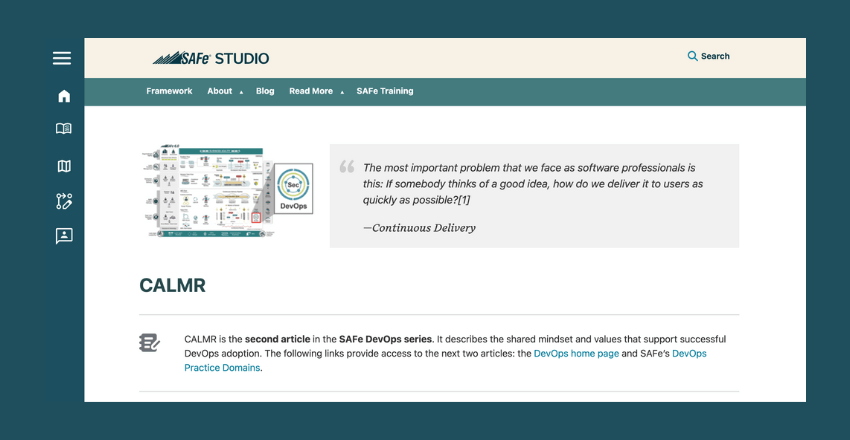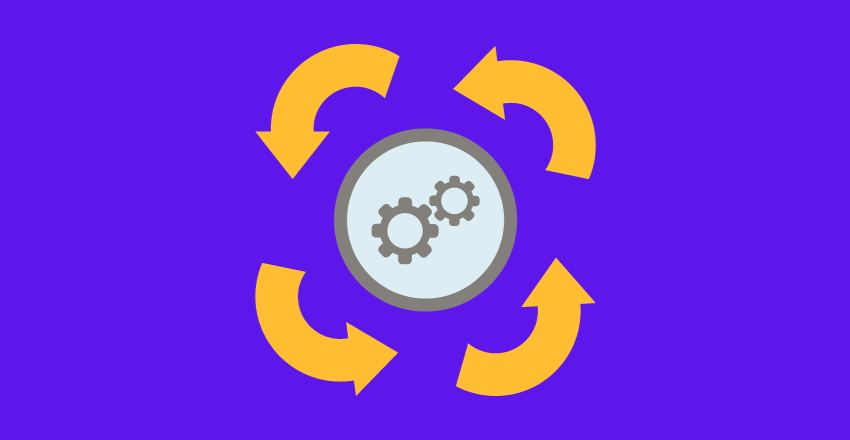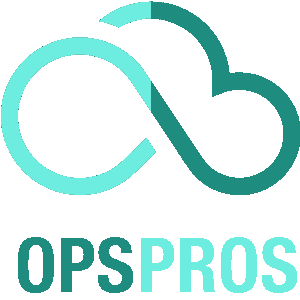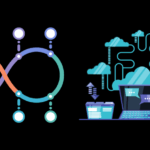
CALMR Approach to DevOps revolutionizes software delivery by focusing on Culture, Automation, Lean, Measurement, and Recovery for optimal performance.
In today’s fast-paced digital landscape, DevOps has become a critical requirement for businesses looking to stay competitive and efficient. However, without a proper framework, DevOps can quickly become overwhelming and chaotic. This is where the CALMR approach comes in.
The CALMR framework offers a strategic guide for streamlined operations and improved business productivity. In this article, we will explore each component of CALMR in detail.
Key Takeaways:
- The CALMR approach provides a strategic guide for streamlined operations and improved business productivity.
- Without a proper framework, DevOps can quickly become overwhelming and chaotic.
- In this article, we will explore each component of the CALMR framework in detail to help you master the CALMR approach to DevOps.
Understanding the CALMR Framework
The CALMR framework provides a strategic guide for achieving efficient and reliable software delivery within a DevOps environment. CALMR is an acronym for the five key components of the framework: Culture, Automation, Lean, Measurement, and Recovery.
| CALMR Component | Description |
|---|---|
| Culture | Emphasizes the importance of creating a DevOps culture that fosters collaboration, communication, and shared responsibility among team members. |
| Automation | Focuses on automating processes in DevOps, such as continuous integration, continuous delivery, and infrastructure as code, to achieve greater efficiency and reliability. |
| Lean | Applies Lean principles, such as waste reduction and value stream mapping, to optimize workflow and reduce waste in the software delivery process. |
| Measurement | Establishes key performance indicators (KPIs) and utilizes data analysis to measure success and provide valuable insights for continuous improvement. |
| Recovery | Ensures reliable recovery and resilience in the event of incidents or disasters, with a focus on proactive measures and incident management best practices. |
By embracing these five CALMR components, organizations can establish a successful DevOps environment and achieve streamlined operations, improved business productivity, and long-term success.
Cultivating a DevOps Culture

DevOps is not just a set of practices or tools; it is a culture that emphasizes collaboration, communication, and shared responsibility. Building a DevOps culture requires a mindset shift, where teams work together towards a common goal of delivering value to customers quickly and reliably.
One of the key aspects of a DevOps culture is collaboration. By breaking down silos between teams, DevOps fosters a sense of shared ownership and accountability. This means that development, operations, and other teams work together to achieve common objectives. Collaboration also helps to identify and resolve issues more quickly, leading to faster and more efficient workflows.
Communication is another critical component of a DevOps culture. Teams must be able to communicate effectively and transparently to ensure everyone is on the same page. This includes sharing information about changes, updates, and potential issues that may arise. Communication also helps to establish trust and build stronger relationships among team members.
Shared responsibility is the third pillar of a DevOps culture. Instead of individual teams being solely responsible for specific tasks, everyone shares the responsibility for delivering software that is reliable, scalable, and efficient. This means that all teams must work together to ensure that the software development lifecycle is streamlined, from planning and testing to deployment and monitoring.
Strategies for Cultivating a DevOps Culture
Building a DevOps culture requires a concerted effort from leaders and team members alike. Here are some strategies to help cultivate a DevOps culture within an organization:
- Establish clear goals and objectives: Teams must understand the overall goals and objectives of the organization and how their work fits into the bigger picture.
- Promote collaboration and communication: Encourage teams to work together and communicate effectively to achieve common goals.
- Foster a blame-free culture: Encourage experimentation and learning from mistakes, without fear of reprisal.
- Encourage continuous learning and improvement: Provide opportunities for training and development to ensure that teams are up-to-date with the latest technologies and practices.
- Use metrics to measure success: Establish relevant metrics and use them to track progress towards achieving goals and improving workflow.
By embracing a DevOps culture that emphasizes collaboration, communication, and shared responsibility, organizations can experience improved workflow, increased productivity, and faster delivery of high-quality software.
Automating Processes for Efficiency
In today’s fast-paced digital landscape, automation is crucial for organizations to remain competitive. Automation allows for streamlined operations, faster releases, and improved efficiency. In DevOps, automation plays a significant role in achieving continuous integration and continuous delivery.
Infrastructure as code (IAC) is a popular technique for automating the deployment of infrastructure. IAC involves defining infrastructure requirements in code, making it easier to manage, version, and automate infrastructure provisioning.
| Automation Tool | Description |
|---|---|
| Jenkins | A popular open-source tool for continuous integration and delivery. |
| Ansible | A configuration management tool that automates software provisioning, configuration, and application deployment. |
| Docker | A containerization platform that allows applications to be packaged and deployed consistently across environments. |
By automating processes, organizations can reduce the risk of human error and ensure that deployments are consistent and reliable. Automation also frees up developers’ time to focus on higher-level tasks, such as innovation and problem-solving.
DevOps teams can use automation frameworks and tools to create and execute tests, deployments, and other tasks in a consistent and repeatable manner. This allows for faster and more reliable software releases, which is essential for staying competitive and meeting customer needs.
Applying Lean Principles to DevOps

The “Lean” component of CALMR emphasizes the importance of waste reduction and optimization of workflow. Applying Lean principles to DevOps can lead to more efficient processes, improved product quality, and increased customer satisfaction.
Value Stream Mapping
Value stream mapping is a key Lean concept used to identify and eliminate non-value-added activities and waste in the development cycle. By using a visual map to analyze the flow of work, teams can identify bottlenecks and areas for improvement.
When applying value stream mapping in DevOps, teams can identify which activities can be automated or streamlined to improve delivery speed and quality. This can help eliminate handoffs between teams and reduce the chance of human error.
Visual Management
Visual management is another essential Lean concept used to improve communication and collaboration within teams. By using visual aids, such as Kanban boards, teams can quickly identify what tasks need to be completed, who is responsible for them, and their current status.
Visual management can also facilitate improved transparency and accountability, enabling teams to identify and resolve issues more efficiently.
Continuous Improvement
Continuous improvement is at the heart of Lean principles. By continuously evaluating and improving processes, teams can create a culture of experimentation and innovation that leads to constant improvement in product quality and customer satisfaction.
Implementing a continuous improvement process in DevOps involves identifying key performance metrics, analyzing data to assess performance, and making data-driven decisions to improve processes.
By adopting Lean principles in DevOps, teams can reduce waste, improve productivity, and deliver higher quality products to customers.
Measuring Success with Metrics
One of the key components of the CALMR approach is “Measurement.” In a DevOps environment, it’s essential to establish key performance indicators (KPIs) and measure success to continuously improve processes and workflows.
Metrics provide valuable insights into various aspects of software development, including code quality, application performance, and user experience. In particular, metrics related to deployment frequency, lead time for changes, and time to restore service can help teams identify areas for improvement and measure the impact of DevOps practices.
When selecting metrics, it’s important to consider both technical and business goals. Technical goals could include reducing the number of failed deployments or minimizing downtime, while business goals could be related to revenue or customer satisfaction.
Once KPIs have been established, it’s crucial to gather, analyze, and display data in a meaningful way. Some best practices for effective data analysis include:
- Defining clear, specific objectives for each metric
- Collecting data consistently and reliably
- Visualizing data in a way that is easy to understand and interpret
- Using the data to inform decision-making and drive continuous improvement
Ultimately, the goal of measuring success with metrics is to identify opportunities for improvement and optimize processes and workflows. By establishing KPIs and regularly collecting and analyzing data, DevOps teams can make informed decisions and continuously improve operations.
Ensuring Reliable Recovery and Resilience
When dealing with critical software systems, it’s essential to have a reliable recovery and resilience plan in case something goes wrong. The Recovery component of the CALMR framework emphasizes the importance of preparedness and proactive measures to minimize the impact of any incidents or downtime.
Resilience, on the other hand, focuses on the ability of the system to recover from failures and adapt to changing circumstances. Both Recovery and Resilience are crucial aspects of a successful DevOps environment that cannot be overlooked.
Incident Response and Disaster Recovery
One of the fundamental parts of a recovery plan is having a clear and well-defined incident response process. This process outlines the steps required to isolate, diagnose, and resolve any issues that arise in the system. It’s essential to ensure that all team members understand their roles and responsibilities in case of an incident.
Disaster recovery planning is another critical aspect of the Recovery component. This process involves developing a plan for restoring critical systems and operations back to normal after a major disruption. The disaster recovery plan should include contingency plans, backup systems, and recovery procedures that can be implemented quickly and efficiently.
Building Resilience
Resilience involves designing systems to withstand and recover from failures. One of the primary ways to build resilience is by implementing redundancy and failover mechanisms. These mechanisms ensure that critical systems have redundant components that can take over in case of a failure.
Furthermore, building a resilient system requires continuous testing, monitoring, and improvement. The CALMR framework emphasizes the importance of measuring system performance and using metrics to optimize and improve the system continually.
In conclusion, the Recovery and Resilience components of the CALMR framework are crucial for establishing a successful DevOps environment. Organizations must have well-defined incident response and disaster recovery plans, as well as build resilient systems that can withstand failures and adapt to changing circumstances. By prioritizing these components, organizations can ensure smooth operations and minimize the impact of any incidents or downtime.
Implementing Continuous Delivery with CALMR

Incorporating Continuous Delivery (CD) practices is a crucial component of the CALMR approach to DevOps. CD enables software delivery teams to release code to production frequently and reliably. By following CD practices, teams can minimize the lead time between code changes and production deployment while reducing the risk of introducing defects and bugs into the production environment.
Automation plays a key role in achieving efficient and reliable CD pipeline. By automating the build, test, and deployment stages, teams can ensure that code changes are thoroughly tested before they are released into production. Automated tests and deployments eliminate the possibility of human error and reduce the time required for manual testing and deployment.
The CALMR framework provides a strategic guide for CD implementation by emphasizing the importance of automation and measurement. By using the principles of Culture, Automation, Lean, Measurement, and Recovery, teams can establish a CD pipeline that is efficient, reliable, and scalable.
Automation in Continuous Delivery
Automation is a critical component of a successful CD pipeline. By automating software delivery processes, teams can:
- Reduce the risk of introducing defects and bugs into the production environment by testing code changes thoroughly before release
- Eliminate the possibility of human error by automating testing and deployment processes
- Speed up the delivery process by reducing the time required for manual testing and deployment
- Ensure that code changes are released into production frequently and reliably
Automation tools and frameworks such as Jenkins, CircleCI, and Travis CI can help teams achieve an effective CD pipeline. By automating the build, test, and deployment stages, teams can reduce the time between code changes and production deployment while increasing the reliability of the release process.
Best Practices for Continuous Delivery
Following best practices is crucial for successful implementation of CD practices in a DevOps environment. Here are some best practices to consider:
- Begin with a small, incremental approach
- Automate the entire delivery process, including testing and deployment
- Establish clear communication and collaboration among all stakeholders involved in the delivery process
- Use version control to manage code changes and track progress
- Ensure that all code changes are thoroughly tested before release
- Set up a monitoring system to detect production issues and respond to them proactively
The CALMR framework can be a helpful guide for implementing CD practices that are efficient, reliable, and scalable. By embracing the principles of Culture, Automation, Lean, Measurement, and Recovery, teams can establish an effective CD pipeline that meets the needs of their organization.
Overcoming Challenges and Common Pitfalls

Implementing the CALMR approach to DevOps can present various challenges and pitfalls. However, by understanding these obstacles, organizations can develop effective strategies for overcoming them and achieving long-term success. Here are some of the most common challenges and best practices for addressing them:
DevOps Challenges
One of the most significant challenges of DevOps is the cultural shift required to establish a collaborative and communicative work environment. This involves breaking down silos and establishing shared ownership and responsibility for delivering software. Other challenges may include resistance to change, lack of skills or resources, and difficulty implementing automation tools.
Common Pitfalls
Many organizations struggle with common pitfalls when implementing DevOps practices. These may include failing to establish clear goals and metrics for success, relying too heavily on automation without considering its limitations, and neglecting to prioritize recovery and resilience in case of incidents.
Problem-Solving Best Practices
To overcome these challenges and pitfalls, organizations can implement various problem-solving best practices. This may involve establishing clear communication channels between teams, investing in training and development to build essential skills, and conducting regular assessments to identify areas for improvement. Developing a culture of continuous learning and improvement is essential for navigating the complex world of DevOps.
Conclusion: Mastering CALMR for Improved DevOps

In conclusion, the CALMR (Culture, Automation, Lean, Measurement, and Recovery) approach provides a strategic guide for streamlining operations and improving business productivity within DevOps environments. Embracing CALMR principles is crucial for navigating the world of DevOps successfully.
By understanding and implementing each component of CALMR, organizations can cultivate a DevOps culture that emphasizes collaboration, communication, and shared responsibility. They can automate processes for more efficient and reliable software delivery, apply Lean principles to reduce waste and optimize workflow, and measure success using data analysis and relevant metrics.
Ensuring reliable recovery and resilience is also essential in a DevOps environment. By developing and implementing strategies for incident response and disaster recovery, organizations can be prepared for any unexpected disruptions.
Adopting continuous delivery practices is another critical aspect of the CALMR approach. Automation plays a crucial role in achieving efficient and reliable software releases, and by mastering CALMR, organizations can continuously improve their DevOps practices over time.
While implementing CALMR principles may present challenges and pitfalls, organizations must remain committed to mastering this approach to achieve long-term success. By applying the tips and strategies outlined in this article, organizations can overcome obstacles and achieve streamlined operations and improved business productivity in their DevOps environments.
FAQs

1. What is the CALMR Approach in DevOps?
Answer: The CALMR approach stands for Culture, Automation, Lean, Measurement, and Recovery. It’s a framework that aims to integrate development and operations for better efficiency and reliability.
Pro Tip: Start with a cultural shift towards collaboration between Dev and Ops teams before diving into automation and metrics.
2. How does Culture fit into the CALMR Approach?
Answer: Culture is the cornerstone of CALMR. It emphasizes collaboration, shared responsibility, and open communication between Development and Operations teams.
Pro Tip: Use tools like Slack or Microsoft Teams to facilitate real-time communication and collaboration among team members.
3. What role does Automation play in CALMR?
Answer: Automation in CALMR focuses on automating repetitive tasks such as code deployment, testing, and infrastructure provisioning to improve efficiency and reduce errors.
# Example: Ansible Playbook for Automated Deployment
---
- hosts: servers
tasks:
- name: install nginx
apt:
name: nginx
state: present
Pro Tip: Always validate your automation scripts in a staging environment before moving to production.
4. How does Lean methodology fit into CALMR?
Answer: Lean in CALMR aims to streamline the software delivery process by eliminating waste, reducing batch sizes, and shortening cycle times.
Pro Tip: Implement Kanban boards to visualize workflow and identify bottlenecks in your DevOps pipeline.
5. What does Measurement mean in the CALMR Approach?
Answer: Measurement involves collecting data on key performance indicators (KPIs) like deployment frequency, lead time, and error rates to make data-driven decisions.
# Example: Prometheus Query for Error Rates
rate(http_requests_total{status_code=~"5.."}[5m]) / rate(http_requests_total[5m])
Pro Tip: Use monitoring tools like Prometheus and Grafana to visualize your KPIs in real-time.
6. How does Recovery fit into CALMR?
Answer: Recovery focuses on quick restoration after failures. It involves practices like rollback strategies, blue-green deployments, and chaos engineering to ensure resilience.
Pro Tip: Implement automated rollback features in your CI/CD pipeline for quick recovery from failed deployments.
Q: How does the CALMR approach relate to agile?
A: The CALMR approach shares many principles with agile methodologies. Both approaches emphasize collaboration, continuous delivery, and the importance of measuring outcomes. The CALMR approach can be seen as an extension of agile principles, specifically focusing on the areas of automation, lean flow, and recovery.
Q: What is the role of automation in the CALMR approach?
A: Automation plays a crucial role in the CALMR approach. By automating repetitive tasks and implementing automated testing and deployment processes, teams can reduce manual errors and improve efficiency. Automation also enables teams to quickly respond to changes and deliver value more frequently.
Q: How does the CALMR approach promote lean flow?
A: The CALMR approach promotes lean flow by optimizing the flow of work through the delivery pipeline. By eliminating waste, reducing handoffs and delays, and continuously improving the value delivery process, teams can deliver value more quickly and reliably.
Q: What is the importance of measurement in the CALMR approach?
A: Measurement is essential in the CALMR approach as it provides teams with insights into their performance and the impact of their changes. By measuring key metrics, teams can identify bottlenecks, track improvements, and make data-driven decisions to optimize their processes.
Q: How does the CALMR approach enable fast recovery?
A: The CALMR approach emphasizes the importance of being able to quickly recover from failures. By implementing automated monitoring and alerting systems, teams can identify issues early and respond swiftly. Additionally, having well-defined recovery processes and practicing incident response drills ensures that teams can recover from failures with minimal disruption.
Q: How does the CALMR approach align with the Scaled Agile Framework (SAFe)?
A: The CALMR approach is compatible with the Scaled Agile Framework (SAFe) as both methodologies focus on the alignment of business and technology teams, continuous value delivery, and fast recovery. SAFe provides a framework for implementing the CALMR approach at scale, allowing organizations to achieve low-risk releases and fast recovery across their entire enterprise.
Q: How does the CALMR approach support effective DevOps?
A: The CALMR approach is a key enabler of effective DevOps. By fostering a culture of collaboration, implementing automation and lean flow principles, measuring performance, and enabling fast recovery, the CALMR approach provides the necessary foundations for successful DevOps implementation and continuous value delivery.
Q: What are the main benefits of adopting the CALMR approach?
A: Adopting the CALMR approach can lead to extraordinary business outcomes. By eliminating manual processes and optimizing workflows, teams can deliver value more quickly and reliably. The focus on automation, measurement, and recovery enables organizations to achieve faster time-to-market, increased customer satisfaction, and improved competitiveness.
Q: How does DevOps leverage the culture created by the CALMR approach?
A: DevOps leverages the culture created by the CALMR approach by encouraging collaboration, breaking down silos between development and operations teams, and fostering a shared responsibility for delivering value. The CALMR approach provides the foundations for a culture of continuous improvement, learning, and innovation, which are essential for successful DevOps implementation.
James is an esteemed technical author specializing in Operations, DevOps, and computer security. With a master’s degree in Computer Science from CalTech, he possesses a solid educational foundation that fuels his extensive knowledge and expertise. Residing in Austin, Texas, James thrives in the vibrant tech community, utilizing his cozy home office to craft informative and insightful content. His passion for travel takes him to Mexico, a favorite destination where he finds inspiration amidst captivating beauty and rich culture. Accompanying James on his adventures is his faithful companion, Guber, who brings joy and a welcome break from the writing process on long walks.
With a keen eye for detail and a commitment to staying at the forefront of industry trends, James continually expands his knowledge in Operations, DevOps, and security. Through his comprehensive technical publications, he empowers professionals with practical guidance and strategies, equipping them to navigate the complex world of software development and security. James’s academic background, passion for travel, and loyal companionship make him a trusted authority, inspiring confidence in the ever-evolving realm of technology.







